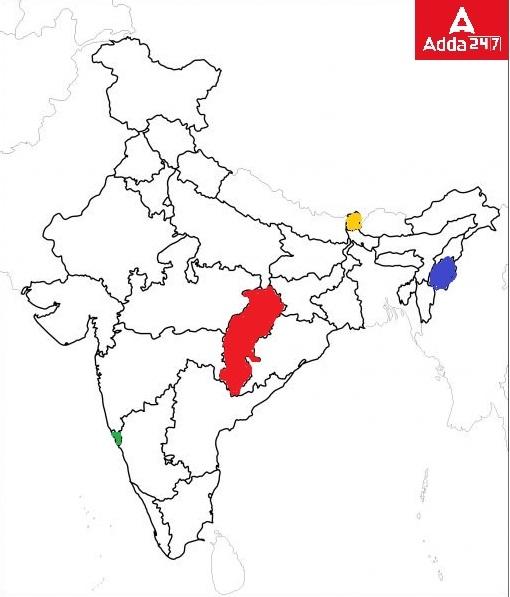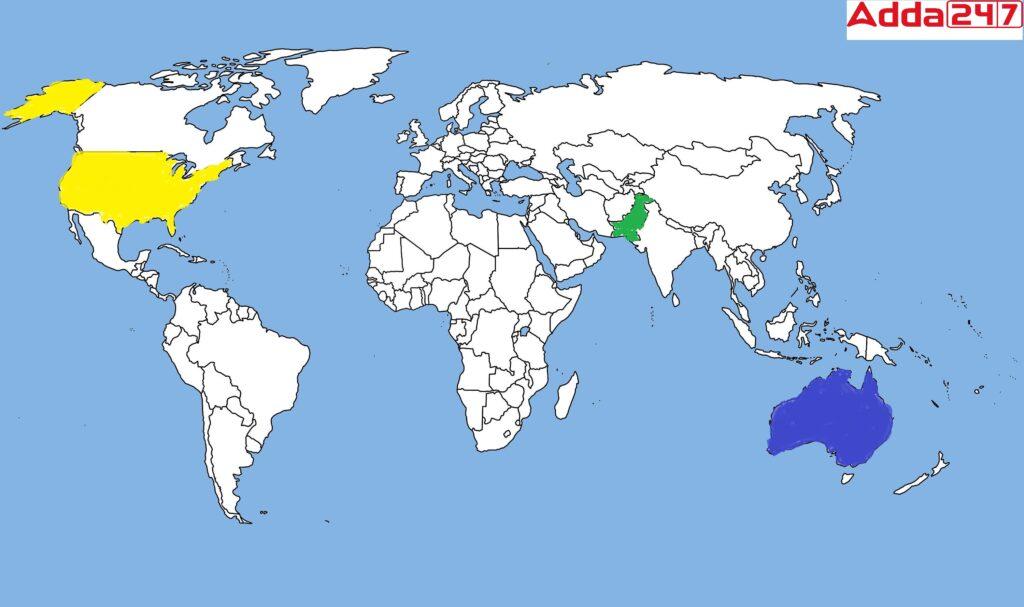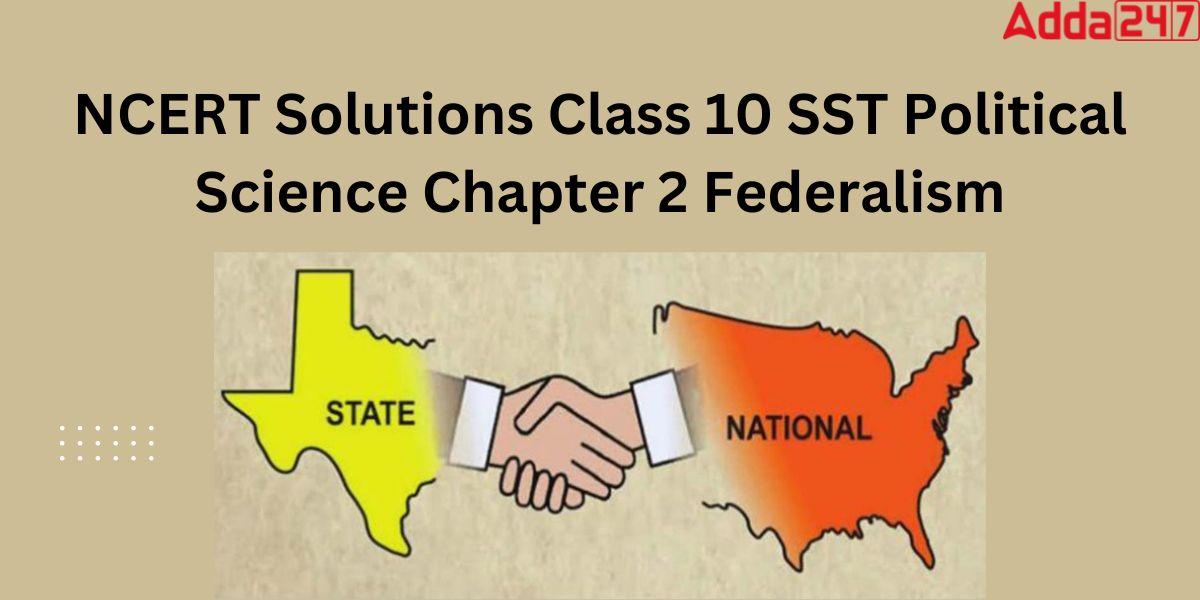NCERT Solutions Class 10 SST Political Science Chapter 2 Federalism
NCERT Solutions Class 10 SST Political Science Chapter 2 Federalism Notes are given in this article.NCERT Solutions Class 10 is the best resource for obtaining a good score in the class 10 board Examination. Here are Adda247 Expert faculty team prepared NCERT Solutions Class 10 SST Political Science Chapter 2 Federalism exercises of that chapter for a better grasp of the topics. These NCERT Solutions answer all questions in an easy and simple manner. These solutions will help you understand the concepts covered in the chapter completely. By writing these answers in the exam students will undoubtedly be able to achieve high scores. Keep learning with Adda247.
Read:NCERT Solutions Political Science Chapter 3 Democracy and Diversity
NCERT Solutions Class 10 SST Political Science Chapter 2 Federalism Pdf
NCERT Solutions Class 10 SST Political Science Chapter 2 Federalism is given in pdf format so that students can easily download it for future use. Click here to download NCERT Solutions Class 10 SST Political Science Chapter 2 Federalism
NCERT Solutions Class 10 SST Political Science Chapter 2 Federalism: Video Explanation
NCERT Solutions Class 10 SST Political Science Chapter 2 Federalism: Quick Review
In Class 10 SST Political Science Chapter 2 Federalism, Students will learn about federalism, a system of power-sharing between two or more levels of government. The fundamentals of Indian federalism will be covered in the chapter. The important topics covered in NCERT Solutions Class 10 SST Political Science Chapter 2 Federalism are listed below.
1, What is federalism?
2, What makes India a federal country?
3. How is federalism practiced?
a. Language policy
b. Centre-State relation
4. Decentralisation in India
NCERT Solutions Class 10 SST Political Science Chapter 2 Federalism Questions with Answers
Exercises Page No. 27
1. Locate the following States on a blank outline political map of India: Manipur, Sikkim, Chhattisgarh and Goa.
Answer. 
In the above Map, the name of the states according to colors are as follows
- Green – Goa
- Blue – Manipur
- Red – Chattisgarh
- Yellow– Sikkim
2. Identify and shade three federal countries (other than India) on a blank outline political map of the world.
Answer. 
Three federal countries are
- Blue-Australia
- Green- Pakistan
- Yellow-USA
3. Point out one feature in the practice of federalism in India that is similar to and one feature that is different from that of Belgium.
Answer. Power-sharing between the union government and state governments is a feature of Indian federalism that is similar to Belgium federalism. In India, The central government must give control to the regional administrations, much like in Belgium.
A distinction between Belgium’s and India’s practice of federalism is that Belgium has a community government, whereas India does not have one.
4. What is the main difference between a federal form of government and a unitary one? Explain with an example
Answer:
| Federal system of government | Unitary system of government | |
| Definition | In a federal system of government, the national government’s authority is divided among several parts of the nation. | In a unitary form of government, the union government has a monopoly on power, and the state governments play no part in this system. |
| Example | An illustration of a federal state is India, which has a union government at the national level, state governments at the regional level, and Panchayati Raj at the local level. | For instance, in Sri Lanka, all authority is vested in the national government. |
5. State any two differences between the local government before and after the Constitutional amendment in 1992.
Answer.
| Local Government before 1992 | Local Government after Constitutional Amendment 1992 |
| Elections were held in an irregular manner under state control. | A State Election Commission that is independent conducts elections on a regular basis. |
| Local governments lacked powers or resources of their own. | The State governments share some powers and revenue with local government organizations. From State to State, sharing takes different forms. |
6. Fill in the blanks:
Since the United States is a ___________________ type of federation, all the constituent States have equal powers and States are ______________vis-à-vis the federal government. But India is a _____________________ type of federation and some States have more power than others. In India, the ____________ government has more powers.
Answer. Since the United States is a coming-together type of federation, all the constituent States have equal powers and States are strong vis-à-vis the federal government. But India is a holding-together type of federation and some States have more power than others. In India, the central government has more power.
7. Here are three reactions to the language policy followed in India. Give an argument and an example to support any of these positions.
Sangeeta: The policy of accommodation has strengthened national unity.
Arman: the Language-based States have divided us by making everyone conscious of their language.
Harish: This policy has only helped to consolidate the dominance of English over all other languages.
Answer.
8. The distinguishing feature of a federal government is:
A.The national government gives some powers to the provincial governments.
B.Power is distributed among the legislature, executive and judiciary.
C.Elected officials exercise supreme power in the government.
D.Governmental power is divided between different levels of government
Answer.
D. Governmental power is divided between different levels of government
9. A few subjects in various Lists of the Indian Constitution are given here. Group them under the Union, State, and Concurrent Lists as provided in the table below.
A.Defence, B) Police, C)Agriculture, E) Education, F)Banking, G)Forests, H)Communications, I) Trade, J) Marriages
| Union List | |||
| State List | |||
| Concurrent List |
Answer.
| Union List | Defence | Communications | Banking |
| State List | Police | Agriculture | Trade |
| Concurrent List | Education | Forests | Marriages |
10. Examine the following pairs that give the level of government in India and the powers of the government at that level to make laws on the subjects mentioned against each. Which of the following pairs is not correctly matched?
| State government | State List |
| Central government | Union List |
| Central and State governments | Concurrent List |
| Local governments | Residuary powers |
Answer.
| Local governments | Residuary powers |
11. Match List-I with List-II and select the correct answer using the codes given below the lists:
| List-I | List-II |
| Union of India | Prime Minister |
| State | Governor |
| Municipal Corporation | Mayor |
| Gram Panchayat | Sarpanch |
Answer:
| List-I | List-II |
| Union of India | Prime Minister |
| State | Governor |
| Municipal Corporation | Mayor |
| Gram Panchayat | Sarpanch |
12. Consider the following two statements.
- In a federation, the powers of the federal and provincial governments are clearly demarcated.
- India is a federation because the powers of the Union and State Governments are specified in the Constitution and they have exclusive jurisdiction on their respective subjects.
- Sri Lanka is a federation because the country is divided into provinces.
- India is no longer a federation because some powers of the States have been devolved to the local government bodies.
Which of the statements given above is correct?
- A, B, and C
- A, C, and D
- A and B only
- B and C only
Answer. (c) A and B only









 HPBOSE Compartment Date Sheet 2025 Out, ...
HPBOSE Compartment Date Sheet 2025 Out, ...
 RUHS Counselling 2025 Round 1 Seat Allot...
RUHS Counselling 2025 Round 1 Seat Allot...
 Bihar Board Dummy Registration Card 2026...
Bihar Board Dummy Registration Card 2026...










